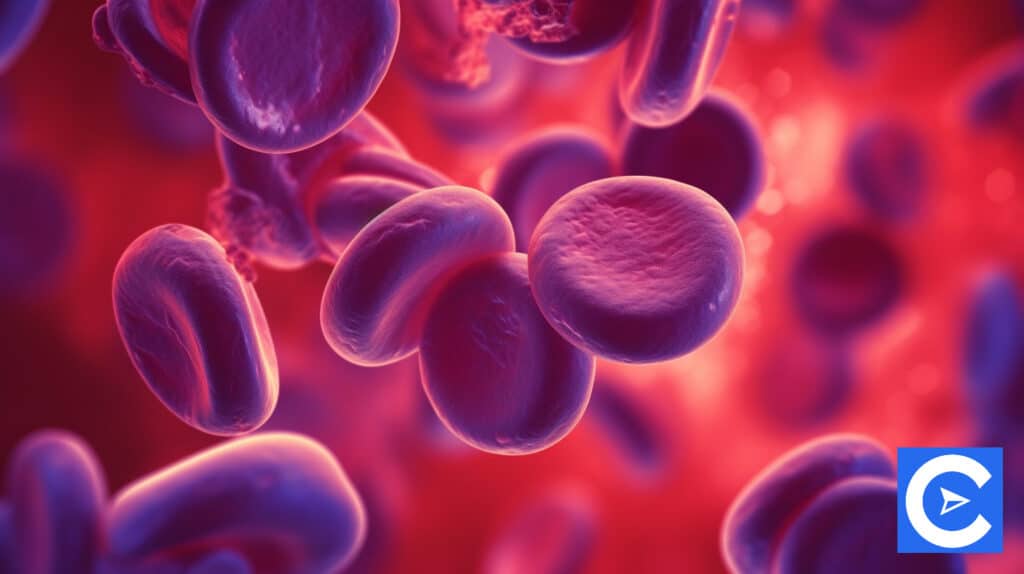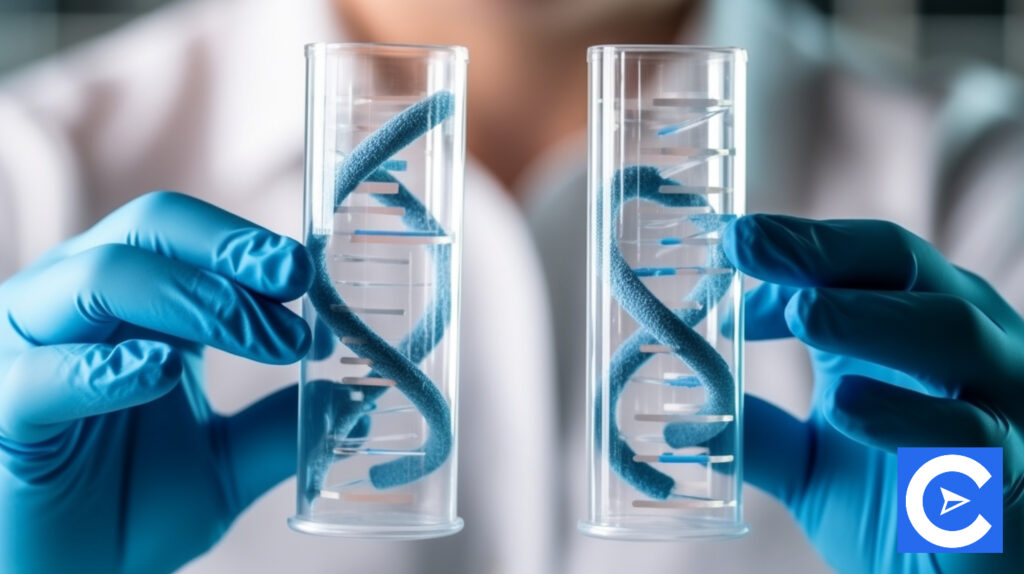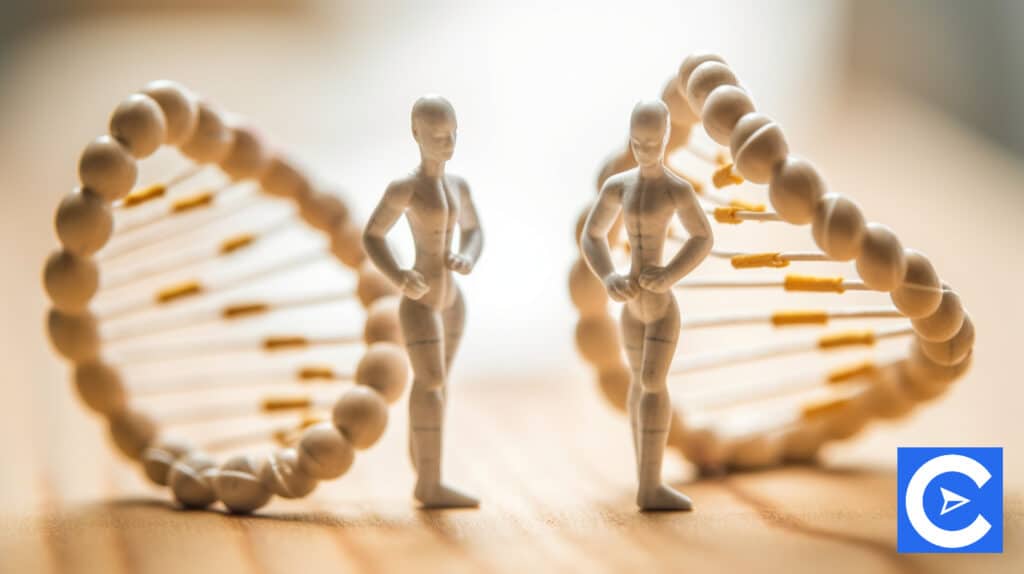On the HESI A2 exam, there are 25 questions that will come from this HESI A2 Biology Study Guide section.
Depending on your requirements when applying, this section might not appear in your specific test.
Some subjects that appear in this section are covered in more detail in the Anatomy and Physiology section, so even if you only have to take this section, rather read through both.
Other Free HESI A2 Study Guides:
There are 8 Modules in HESI A2 Study Guide. Here you can navigate all the HESI A2 Study guide modules.
- HESI A2 Study Guide Home
- HESI A2 Grammar Study Guide | Module 1
- HESI A2 Reading Comprehension Study Guide | Module 2
- HESI A2 Vocabulary Study Guide | Module 3
- HESI A2 Biology Study Guide | Module 4
- HESI A2 Anatomy and Physiology Study Guide | Module 5
- HESI A2 Physics Study Guide | Module 6
- HESI A2 Chemistry Study Guide | Module 7
- HESI A2 Math Study Guide | Module 8
Let’s get started
Macromolecules

Playing a critical role in both the function and structure of cells, macromolecules are large and complex.
Anabolic reactions produce four basic organic macromolecules and these are carbohydrates (polysaccharides), nucleic acids, proteins, and lipids.
Monosaccharides (glucose), amino acids, fatty acids (glycerol), and nucleotides are the four building blocks seen in catabolic reactions.
What is an anabolic reaction?
Well, it ensures that macromolecules, which are more complex, form from smaller ones.
As for a catabolic reaction, well that’s the exact opposite of an anabolic one.
Here, smaller molecules form when larger ones are broken down.
Energy is necessary for anabolic reactions while it is released for catabolic ones.
When chemical reactions absorb heat, they are known as endothermic reactions.
If heat is released, the reaction is said to be exothermic.
Carbohydrates
Because they can easily be converted into glucose, carbohydrates are tasked with providing energy and are a primary source in the body for doing so.
Cells get energy from the oxidation of carbohydrates and after that, in the process of glycolysis, glucose is further broken down through fermentation or respiration.
From a structural point of view, it is some variation of CH20 that carbohydrates take the form of, more often than not.
This is because they are composed of oxygen, carbon, and hydrogen.
When broken down, carbohydrates become sugars or glucose.
When grouped, these simple sugars are monosaccharides (glucose, galactose, and fructose) and disaccharides.
The first type has one monomer of sugar and the second type has two.
A monomer is simply a molecule that is very small, made up of a single compound and when forming a bond with another, becomes a polymer.
These are then larger molecules that come about from repeating monomers.
Nucleic acids, proteins, and carbohydrates are macromolecule groups that are considered as polymers.
Lipids
While they are soluble in nonpolar solvents, lipids don’t bond properly with water or mix well when water solutions are used.
This means they are hydrophobic.
They are very similar to hydrocarbons because they too have many C-H bonds.
What role do lipids play in the human body?
Well, primarily, they are tasked with storing energy as well as having structural functions.
Lipids include waxes, steroids, phospholipids, and fats.
Fats (triglycerides) consist of three fatty acids which are glued together by glycerol to form long chains of fatty acids.
Fatty acids are chains too, but they have carboxylic acid groups at one end of the chain and reduced carbon at the other.
Phospholipids, instead of having a fatty acid, have a phosphate group while another type of lipids are glycerides.
These include oil and fat and their formation comes about thanks to glycerol and fatty acids.
Proteins
These are formed from amino acids and take the form of macromolecules.
They consist of between 10 to 100 peptides linked together and are called polypeptides.
It’s as a result of condensation reactions that these peptides form.
When a condensation reaction occurs, water loss occurs as two molecules join.
There’s an opposite reaction to this, termed a hydrolysis reaction which sees water added, not taken away.
One of the smaller molecules has -H added while the other being formed has OH added to it.
And what is a peptide exactly?
Well, it is a compound of at least two, but often more, amino acids.
As for amino acids, amide bonds form due to the partial hydrolysis of protein.
This, in turn, leads to amino acid formation.
When partial hydrolysis occurs, a carboxylic acid, and an amino group are involved.
These groups are found in every carbon chain of amino acids.
Between them, they will have a carboxylic acid group (-COOH) with an attached side chain “R” group.
Depending on the type of amino acid, this “R” group is different.
It’s important, however, because the protein properties are determined by it.
Enzymes
Enzymes have strong catalytic power and are proteins.
The speed at which certain reactions approach equilibrium is greatly accelerated by them although they do not start reactions themselves.
The speed at which the reactions are speeded up by enzymes is substantial, however.
All enzyme types deal with substrates, more commonly called reactants.
The enzyme will only select the substrate that it matches with but the enzyme must reshape itself to do so.
Once that occurs, a strong bond is formed and this bond helps to catalyze the reaction.
Following that, the enzyme will return to the shape it originally was.
Interestingly, while enzymes will speed up reactions, they aren’t consumed during the process, this means they are a constant source for cells as an accelerant, increasing the number as well as the rate of reactions.
Nucleic acids
Nucleic acids, composed of nucleotides are also macromolecules.
Water is broken down into hydroxide anions (OH or OH-) and hydrogen cations (H or H+) through a reaction known as hydrolysis.
Enzymes break down nucleic acids during this process and this results in shorter strings of RNA and DNA (oligonucleotides).
They then are broken down further into nucleosides, which are smaller sugar nitrogenous units.
Because the sugar and the nitrogenous base are divided, it swallows the cells to digest it far easier.
And that means that five types of nitrogenous bases form, as well as sugars, and preliminary substances.
These are involved in new RNA and DNA synthesis.
This RNA and DNA which are macromolecular nucleic acid polymers, see their formation from nucleotides.
These nucleotides are bound together by phosphodiester bonds and are monomeric units.
In order to synthesize proteins from amino acids and replicate DNA, cells need energy.
This takes the form of ATP.
Nucleotides are synthesized for DNA and amino acids for proteins via nitrogen fixation.
Part of this process sees the use of the nitrogenase enzyme in ammonia (NH3) and dinitrogen gas (N2) reduction.
Acting as important catalysts, nucleic acids store energy and information.
The transfer of DNA genetic information into protein coded information is as a result of the RNA (ATP is an RNA nucleotide).
When it comes to the formation of nucleic acids, nucleotides are an important part of the process.
They themselves consist of a five-carbon sugar (for example, deoxyribose and ribose), a base of nitrogen, as well as at least one phosphate.
If they do include multiple phosphates, within their bonds, energy can be stored.
DNA

Genes or single units of genetic information are what chromosomes consist of.
Deoxyribonucleic acid (DNA) is what these genes consist of with the cell nucleus the location of this acid.
That’s not the only place you will find DNA, however.
It also occurs in the mitochondria.
As a way to pass on genetic information, DNA will replicate, with it found in almost all of the cells in the human body at any one time.
When proteins are biosynthesized, DNA plays a part too.
The term double helix describes DNA’s structure.
The shape of a helix is a curve with a double sporting two congruent curves, with the connection between them thanks to horizontal members.
The double helix model for DNA was formulated by James Watson and Francis Crick based on an x-ray diffraction image taken by scientist Rosalind Elsie Franklin in 1952.
The structure of DNA
We’ve mentioned the double helix shape of DNA, which is very compact.
DNA is made up of nucleotides which we already established include a nitrogen base, a phosphate group as well as a five-carbon sugar.
DNA looks like a right-handed staircase spiraling downwards. The runs of the ladder are formed by two bases with the backbone or side rails composed of phosphate and covalently bonded sugar.
Replication can occur easily because hydrogen bonds help the bases attach to each other.
This is because these bonds are easily taken apart.
A sugar and phosphate is found attached at each base.
In total, there are four different types of nitrogenous bases: thymine (T); cytosine (C), guanine (G), and adenine (A) and in total, in a human’s DNA, you will find around 3 million bases in total.
While bases are generally the same in everyone, the differences come in the way they are ordered and that’s what makes the human race diverse.
Note that of the four bases, cytosine (C) will pair with guanine (G) and thymine (T) with adenine (A).
Pyrimidines and Purines
Depending on their structure, DNA and RNA bases can be categorized as purine or pyrimidine.
Cytosine, thymine, and uracil are included in the pyrimidine bases while adenine and guanine are purine bases.
Pyrimidine bases have a single ring shape and are six-sided while purine bases are made up of two rings, with one having six sides and the other five.
If sugar combines with any of the bases they turn into nucleosides.
If formed from a purine base, they will end in “osine” and those formed from pyrimidine bases end in “idine”.
Examples of nucleosides include thymidine and adenosine.
The most basic components are bases, then, nucleosides, nucleotides, and finally, DNA and RNA.
Codons
Visualized as three rungs on a ladder, codons are found on messenger RNA and are groups of three nucleotides.
A single amino acid code is found within a codon, note however that there are 20 amino acids and 64 codons.
This means that to synthesize the necessary amino acids, more than one combination, or triplet can be used.
These groups of three can be thought of as frames as they occur in strings.
Because they can be grouped together differently, the beginning and end of a sequence (frame) will be signified by start and stop codons.
DNA replication
Chromosome pairs are made up of DNA wound tightly together to ensure space efficiency.
At the point of replication, which is controlled by enzymes, it will begin to unwind.
Hydrogen bonds situated between the bases will begin to deform and will then form two strands.
This process is set in motion by the helicase enzyme.
It’s at the A-T bases, which are adenine and thymine that the splitting starts because here, there are only two hydrogen bonds.
When the splitting starts, the term “origin of replication” is used to describe it with the replication fork the part of the DNA that unwinds to be replicated.
mRNA then transcribes each piece of DNA which is then copied, base by base, onto itself in a complementary manner.
The only exception is thymine replaced by uracil.
RNA

RNA carries out a number of functions, including acting as a helper to DNA.
RNA types include:
- Messenger RNA (mRNA)
- Transfer RNA (tRNA)
- Ribosomal RNA (rRNA)
RNA is sometimes used by viruses as a way to transfer their genetic material to DNA.
In science, the study of relations in organisms is carried out by looking at Ribosomal RNA as the belief is that this hasn’t changed much over time.
Transportation of copies of DNA strands from the nucleus to the cytoplasm is carried out by messenger RNA.
A process called transcription then takes place and DNA is copied into RNA by unwinding and providing a template as the RNA assembles.
A process called translation of the needed protein is put together by ribosomes using transcribed DNA.
Found in cytoplasm, transfer RNA is a molecule that aids the translation process.
RNA and DNA differences
It’s in both function and structure where RNA and DNA differ.
Instead of deoxyribose sugar, like DNA, RNA instead has ribose while adenine (A); guanine (G), cytosine (C), and uracil (U) are the nitrogenous bases associated with it.
Interestingly, DNA does not contain uracil but does contain thymine, which is then not found in RNA.
In terms of the number of strands each has, we know that DNA has two strands.
RNA, on the other hand, only has one.
There are more differences, however.
For example, there are two side rails found in DNA while RNA has one “backbone”.
This strand comprises phosphate group components and sugar.
The sugar used by RNA is pentose, which is a fully hydroxylated sugar.
This again differs from DNA which uses deoxyribose.
Pentose has an extra oxygen over deoxyribose.
RNA aids in transportation, replication, and gene expression and on the whole support the function carried out by DNA.
Mendel’s law

Mendel’s laws are:
- 1st law: Law of segregation
- 2nd law: Law of independent assortment
- 3rd law: Law of dominance
Let’s look at the law of segregation.
This says that each parent organism is contributed to by half the total number of alleles of which there are two.
The law of independent assortment traits do not influence each other and they are, in fact, passed on randomly.
The law of dominance states that the dominant alleles is expressed when different ones are present in a pair.
Allele, phenotype, genotype, and gene
How traits are passed onto an organism and expressed are all thanks to genes, which are a part of DNA.
The genetic code itself sees genes form part of it.
In turn, the genotype of each individual is formed from all genes collectively and this includes recessive genes or those that are not expressed.
The physical, visual manifestation of the gene is the phenotype.
This is determined by how genes are affected by the environment in which they are found as well as basic genetic information.
When we speak of an allele, we are talking about a gene variation.
This determines the manifestation of the gene and can also be called a trait.
That manifestation equals a certain physical appearance of some aspect of an organism.
An example of this would be eye color.
Dominant and recessive
Dominant gene traits are expressed as an upper case letter (A) while recessive traits have a lower case letter (a).
In General, it’s in pairs that genes occur, for example, AA, aa, or Aa.
On each chromosome half supplied by each parent organism, you will find one gene.
Parents supply half the genetic material and because of this, the traits of their offspring will be a combination of these.
Only one gene of a gene pair is required for a dominant trait to be expressed in a phenotype.
In order to manifest, a recessive trait requires both genes, however.
Monohybrid and hybrid crosses
The possible combinations of alleles are expressed in genetic crosses.
When we talk of a monohybrid cross, it’s one in which only one trait is involved and normally, it will be a 3:1 ratio (dd, Dd, Dd, DD).
That ratio is that of the manifestation of dominant genes to recessive genes.
When both parents have a pair of recessive and dominant genes, this ratio takes place.
A dihybrid cross it’s one in which there is more than one trait.
Because of this, far more combinations can happen.
The ratio when the traits are not linked is 9:3:3:1, while the incomplete dominance ratio is 1:2:1.
This links to recessive, mixed, and dominant recessive types.
Non-mendelian concepts

Co-dominance
When speaking of co-dominance, this looks at the expression of both alleles and because of them, both traits are on display.
As an example, the hair color of cows is red, white, or red and white.
In the last example, which is not pink but a distinct red and white coloring, there is a full expression of both traits.
Another example of something that is co-dominant is the ABO blood typing system.
Incomplete dominance
When both the recessive and dominant genes are expressed, we have incomplete dominance resulting in a phenotype that includes a mixture of both.
Polygenic inheritance
This goes past the Mendelian concept that one trait is influenced by one gene.
Instead, it pertains to the fact that more than one gene is influencing traits.
It also takes into account development and the role that environmental influences play in it.
Multiple alleles
We know that only two alleles make up each gene.
In some instances, what those two alleles might be, comes down to more than two possibilities.
Let’s look at blood typing, for example.
Here three alleles are A, B, and O.
While there are three, each person has only two of the three.
A multiple allele is the name given to a gene with more than two possible alleles.
A polymorphic gene is one that can have two or more expressions or forms.









